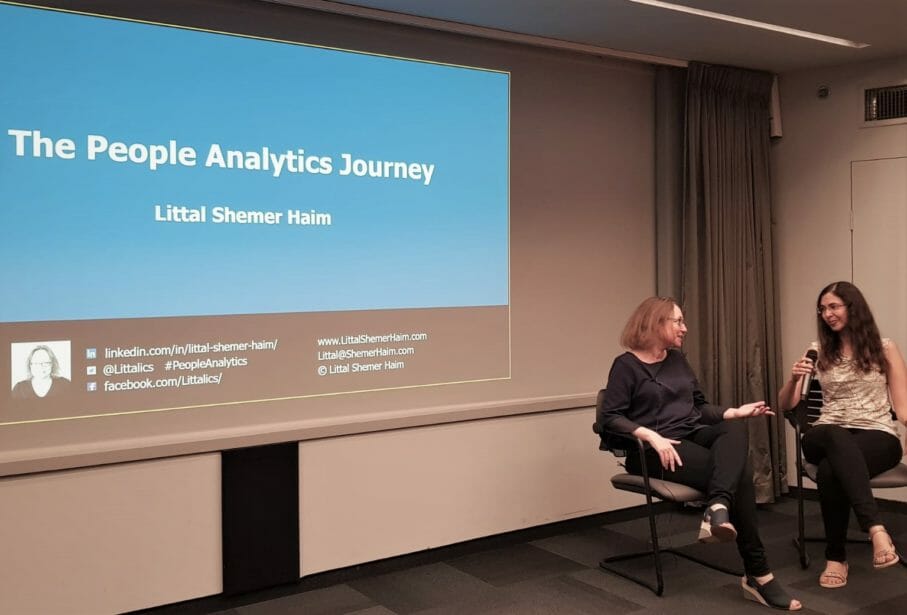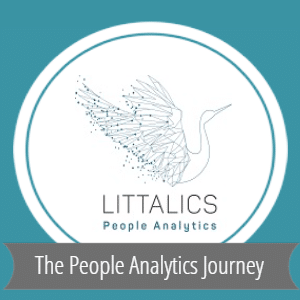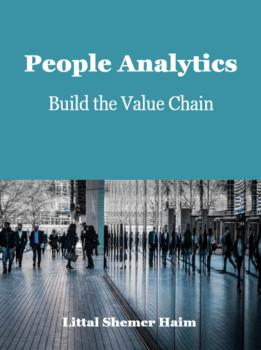We share a lot of case studies within our People Analytics professional community. It enables us to jointly educate ourselves with great examples of connecting business questions to analytics projects and products. The growing group of professionals that fill roles in this domain is certainly a huge advantage with that respect. However, most of the case studies that we encounter represent mature stages, while most of the new players in this rising profession struggle completely different challenges. I find the onboarding of People Analytics Leaders, and especially those who are the first to take that role in their organization, fascinating and worth following.
 So how do you enter a People Analytics Leader role, when you are the one who establishes it? Let’s put our datasets aside for a moment, and discuss the thoughts, plans, experiences, and hopes, at this crucial phase of the role. I was privileged to further explore this process at one of my old clients – Amdocs. Although organizational researches that fall within the category of People Analytics have been conducted in Amdocs long before, this global company, which operates in over 50 locations, has a new People Analytics Leader – Gal Mozes. I had the pleasure to interview Gal lately on stage, on one event of “Amdocs Career Week”.
So how do you enter a People Analytics Leader role, when you are the one who establishes it? Let’s put our datasets aside for a moment, and discuss the thoughts, plans, experiences, and hopes, at this crucial phase of the role. I was privileged to further explore this process at one of my old clients – Amdocs. Although organizational researches that fall within the category of People Analytics have been conducted in Amdocs long before, this global company, which operates in over 50 locations, has a new People Analytics Leader – Gal Mozes. I had the pleasure to interview Gal lately on stage, on one event of “Amdocs Career Week”.
During “Amdocs Career Week” both employees and managers in Amdocs were invited to participate in activities, such as lectures from keynote speakers, workshops, Hackathon, and panels with leaders, with the main objective of promoting the dialogue around their development and future career path at Amdocs. This special week was a great opportunity to take the first formal step on the journey to data-driven HR within the entire Amdocs HR community, which encompass a few hundreds of HR professionals. In my session with this audience, I offered an introduction to People Analytics. But my introduction could not be completed without Gal’s interview, which shed light on her onboarding. I’m happy to share this interview with our community, and I’m sure it will inspire other People Analytics Leaders who take their first steps and establish the role in their organizations.
Background
LSH: Tell us about yourself, Gal, and why did you choose to move to the field of people analytics?
GM: I’m an organizational psychologist, and until a few months ago, I was working as an organizational development consultant for the past 8 years. I was leading the sensing domain meaning I was responsible for the annual engagement survey and pulse surveys, so you can already see I had a flavor for the mix of numbers and people. Also, I have a Ph.D. in social-organizational psychology that included creating a questionnaire about behaviors and a lab simulation, so I also have a soft spot for psychological research, and I’m no stranger to social science statistics. And last but not least, I love to uncover insights and help others do the same, so when I started hearing about this new domain called People Analytics, I was quite intrigued. Locating myself in the intersection between organizational psychology and data was the next obvious move, and luck was on my side at me when a new people analytics role was created in my company, and my passion for the area was a well-known fact. A real match made in (workplace) heaven and so I found myself moving to this role.
Challenges
LSH: How would you describe the challenges that your company faces these days in regards to data strategy?
GM: I think that in the past 2 years, we took very important steps to promote ourselves when it comes to descriptive data. We worked hard to create a ‘one-stop-shop’ dashboard for leaders and HRs so that they will have a place to see key measurement in the different people related areas such as recruitment, performance management, talent mobility, burn out and more. I think we still have a way to go when it comes to turning it into a decision-supporting tool and showing the value it brings. But descriptive data is just the first step of the journey when becoming data-driven. However, it’s not people analytics just yet, for which the diagnostic part is the holy grail. When we learn to identify key business challenges and then use clever tools and approaches, such as predictive analytics, ML, planned experiments, etc. to tackle them, then we will be where we strive to be at, which is data-savvy.
LSH: Your HR partners, where are they in the journey of becoming data-driven?
GM: I keep reading articles about how HR is not data-oriented, and the worst thing is they say it about themselves! I believe that where there’s a will, there’s a way and I’m happy to say that I’ve seen a great deal of willingness to go on that journey. People understand that this is a key future capability in HR, and they are willing to step out of their comfort zone and acquire these skills. Yes, I know some might lack the tools and the experience, but this should not hold them back. I’m here to support them, and part of my job would be to provide the tools, training, and consultation that would help them during the journey. I hope this can be a first step in creating their confidence in this data-driven approach, knowing that they’re not alone.
Development in HR
LSH: Why do you think it’s crucial these days for an HR leader to base their discussions on data?
GM: In order to make an impact on the business, you need to talk “the language of the business”, which is numbers, money, analytics, and data related insight. So if an HR leader wants to be a key partner, speaking in the same language and terms is a must. Also, I think that using a combination of their experience and intuition together with the data and analytics would be so powerful that they would be practically invincible. But seriously though, I don’t think data solves everything, but it’s much harder to argue with, and it’s a strong tool to make a point and initiate a change.
LSH: What do you expect from HR leaders as your partners?
GM: It’s easy; I want them to be my partners in crime and go on this journey together. We work in a large organization of 25K employees in more than 50 countries and diverse business units and roles. So the challenges are plenty and quite diverse, it’s never boring, but it’s also a lot. My HR partners are required to be able to raise the business questions in relation to people’s data, as they are there in the field and they know the needs and challenges in a way I could never know. So my request to them is data-minded so we can work together to identify the opportunities to utilize data and uncover the insights that can bring value to the business and the employees. This means the HR leaders should be able to review data, hold a conversation around data points and analytics, and most importantly, find the relevant business questions.
Success
LSH: What would you define as a successful first year in the role?
GM: That’s a tough one, much easier to say what others should do! Honestly, I understand It’s a huge mission, and so much more than being “analytic” and knowing how to work with data. That’s why I would define success in the first year relating to two main stakeholders: First, let’s start with my partners in HR. I would love to see a change in HRs mindset so that they would feel comfortable with data. Again, I see the approach towards HR in relation to data, and I truly don’t think it’s justified. If we will move out of our own way and desert this perception, then I think this can become one more valuable tool in their already impressive toolbox. Also, based on the wise words of people analytics leaders the duty of the people analytics function is to make the HR more data-driven, and I’m not going to argue with the experts but rather take this advice and learn from their experience. Second, If I want to earn my keeping, then there has to be a contribution to business success. And while knowing this is a key element of this role’s essence, I also know it’s very ambitious. So while I already started looking into a few interesting leads, I am aiming to find a quick win people analytics project. This means easy to access and use data in an area it would be possible to do a real change that is valuable to the business. And for that, I need to know that I’m not alone and have my trusted HR partners so that together we will find the right opportunities to make an impact.







